 Massage is the manipulation of the soft tissues of the body and is generally used to stretch out muscles, remove knots and tension, and improve mobility.
Massage is the manipulation of the soft tissues of the body and is generally used to stretch out muscles, remove knots and tension, and improve mobility.
Massage can also be useful to promote feelings of well-being and improve the canine –human bond, both of which are extremely important for rescued dogs.
I would always suggest approaching a fully qualified massage therapist to help with any rescued dog as they are trained to look for behavioural signs that dogs give as an indication of pain and discomfort. Often one of the difficulties with rescue dogs is that their history can be unknown. A covering of fur often makes it difficult to see previous injuries and the dog may not be lame or experiencing mobility issues, neither can it tell us if any part of it is sore or has been sore in the past. The first indication may be when the dog reacts, sometimes in quite an extreme way to an unexpected touch. Hence why training is needed to spot the signs first. Some of the signs to look out for that may indicate your dog is in pain include
- Limping
- Stops interacting
- Avoidance of eye contact
- Un-groomed appearance
- Reluctance to stretch
- Repeated stretching
- Hunched posture
- Withdraws when approached
- Salivation
- Dilated pupils
- Incessant licking of areas such as feet and hips
- Vocalisation
- Growls when approached
- Attacks when approached
- Rigid and non-responsive.
More subtle signs of pain may include licking you when you stroke them as a diversionary tactic, yawning or lip licking while you stroke them, and becoming clumsy as they become less agile.
Massage on animals is always carried out with vet consent by law (beware any therapist who doesn’t insist on this). This allows the owner to get the dog checked for underlying causes of pain if any of the signs above have been noticed.
If pain has been noticed a series of massages may help to ease this and can also improve well-being as mentioned earlier. Massage improves blood flow and induces relaxation and also stimulates the body’s natural feel good chemicals – endorphins to be produced. Stress often induces muscle tension so a period in kennels can mean a dog can experience a lot of tension particularly in its back and neck which a massage can go a long way to addressing.
Your therapist will also be able to give you suggestions for how to continue the beneficial effects of the massage between sessions and could offer a range of exercises to use to work on strengthening particular muscle groups. When your dog is used to massage from a therapist you will be able to continue to use the basic massage techniques to strengthen the bond and trust between you and your dog.
Louise Wilkes Dip ICAT (dist)
Hands 4 Hounds Canine Remedial Massage

No comments yet.